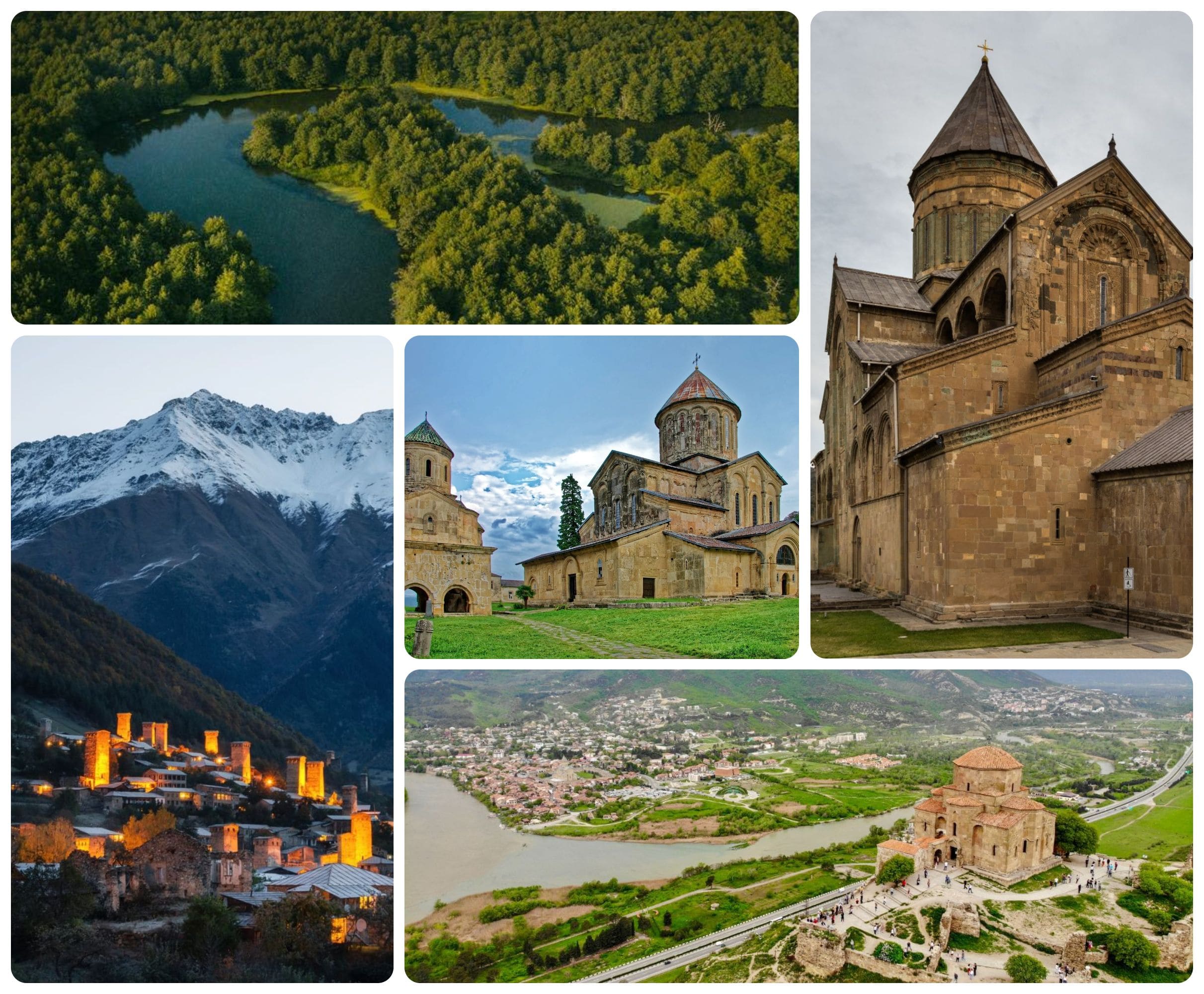Georgia in UNESCO World Heritage List
Georgia is one of the world’s oldest civilizations, rich in history, heritage, and natural beauty. Nestled between Europe and Asia, this small yet extraordinary country is home to ancient monasteries, medieval mountain villages, pristine rainforests, and unique traditions that have stood the test of time.
Since becoming a member of UNESCO in 1992, Georgia has made great strides in preserving and promoting its most valuable assets. Today, the country proudly boasts four UNESCO World Heritage Sites, 14 sites on the Tentative List, and four elements inscribed on the Intangible Cultural Heritage of Humanity list.
- Ready to explore these heritage wonders for yourself?
Discover our UNESCO-focused and cultural tours in Georgia – curated for history lovers, culture seekers, and adventurers alike.
Here’s everything you need to know about UNESCO World Heritage Sites in Georgia and how you can experience them on your journey through this fascinating country.
1. The Historical Monuments of Mtskheta
Located just 20 km from Tbilisi, Mtskheta is Georgia’s ancient capital and spiritual heart. This UNESCO-listed site includes three incredible landmarks:
-
Svetitskhoveli Cathedral
-
Jvari Monastery
-
Samtavro Monastery
These early medieval structures date back to the time when Georgia adopted Christianity as the official religion in 337 CE. The harmonious blend of architecture, history, and religious symbolism makes Mtskheta one of the most visited cultural destinations in Georgia.
2. Gelati Monastery – A Center of Learning and Faith
The Gelati Monastery, located in Kutaisi, was founded in 1106 by King David the Builder during Georgia’s Golden Age. Once a major center of education and theology, Gelati was home to a prestigious academy and houses vivid medieval frescoes and mosaics.
Its unique combination of religious architecture and educational significance earned it a well-deserved place on the UNESCO list in 1994.
3. Upper Svaneti – Medieval Villages in the Caucasus Mountains
If you’re looking for authentic mountain life and a true immersion into medieval Georgian culture, Upper Svaneti is a dream destination. Located in the highlands of northwestern Georgia, this region is famous for:
-
Stone Svan towers
-
Fortified villages like Ushguli (one of the highest settlements in Europe)
-
Stunning alpine landscapes and preserved traditions
The ancient way of life in Svaneti has remained untouched for centuries, making it a living museum in the mountains.
4. Colchic Rainforests and Wetlands – Georgia’s Natural UNESCO Site
In 2021, Georgia received its first natural UNESCO World Heritage designation with the Colchic Rainforests and Wetlands. Spread across Guria, Adjara, and Samegrelo-Zemo Svaneti, this site includes:
-
Ancient temperate rainforests with high humidity
-
Rare and endangered plant and animal species
-
Wetlands teeming with biodiversity, including the critically endangered Colchic sturgeon
With elevations from sea level to 2,500 meters, these protected areas offer a unique eco-tourism experience for wildlife lovers and nature photographers.
Georgia’s Intangible Cultural Heritage
Beyond its monuments and natural sites, Georgia also preserves living cultural traditions that are globally recognized by UNESCO. These include:
-
Georgian polyphonic singing – a hauntingly beautiful vocal style with multiple harmonies
-
Qvevri winemaking – an 8,000-year-old tradition of fermenting wine in clay vessels underground
-
The Georgian alphabet – three unique scripts still used today
-
Chidaoba – traditional Georgian wrestling, blending sport and ritual
Why Visit Georgia’s UNESCO World Heritage Sites?
-
✅ Authentic experiences rooted in thousands of years of history
-
✅ Easy access from Tbilisi, Kutaisi, and other cities
-
✅ A rich blend of cultural landmarks, natural wonders, and traditions
-
✅ Perfect for history buffs, cultural travelers, families, and photographers
Plan Your Journey with Us
Whether you’re walking through the medieval streets of Mtskheta, hiking to the stone towers of Svaneti, or birdwatching in the Colchic wetlands, Georgia’s UNESCO sites offer a journey through time, tradition, and untouched nature.
- Explore our full range of Georgia tours and let us help you experience these world treasures up close.
Let Georgia’s rich cultural heritage and natural beauty leave a lasting impression on your soul.


Comment (0)